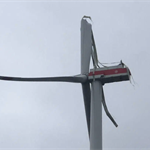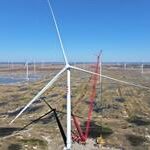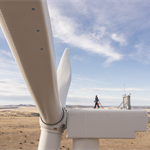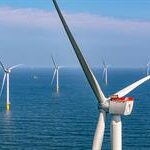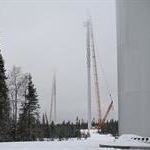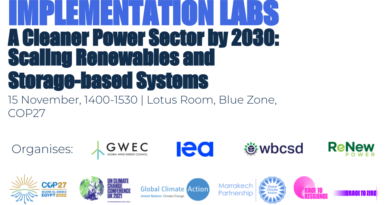GE Renewable Energy investigates second Cypress wind turbine failure in two months
Energy Disrupter
GE Renewable Energy is working with Danish developer European Energy to investigate why one of its nine Cypress onshore turbines – operating in 5.5MW power mode – collapsed at the Anykščiai wind farm in Lithuania on 11 March 2022.
The investigation comes just two months after GE launched a similar probe in Germany where a blade snapped off a 5.3MW Cypress turbine. A similar blade failure, again on a GE Cypress 5.3-158 turbine, was also reported last August at the 175MW Björkvattnet wind farm in Sweden.
In a statement, European Energy confirmed the turbine collapse, and said the local authorities were informed as soon as the company learned of the incident.
“There have been no injuries in the incident,” said a spokesman for the company. “We have temporarily suspended the operation of all turbines in the Anykščiai wind farm to investigate the issue at hand in collaboration with the relevant authorities and our turbine supplier.”
GE said in a statement: “We immediately secured the site and informed the wind farm owner. We are working to determine the root cause of the incident.”
‘Like a bomb going off’
Local media said residents of the nearby village of Staškūniškis were alerted to the incident by a shockwave at 8.15am last Friday.
Lithuanian media outlet Anyksta quoted Danius Tursa, who said: “The first thought was that a bomb had exploded somewhere nearby. Even the walls of the house shook from the shock wave. The whole village of Staškūniškis heard it.”

The 49.5MW Anykščiai wind farm is European Energy’s first in Lithuania. Due to become operational later this year, the nine Cypress turbines at the project have a rotor diameter of 158m, blades from GE subsidiary LM Wind Power, and are installed on 151m towers.
The project is reported to be one of three wind farms European Energy has agreed to sell to an unnamed European renewables fund manager, all of which will use Cypress turbines. The turbine supply agreements European Energy has with GE, which include a 25-year service contract, are all for the Cypress onshore model. In Lithuania alone, deals between the two will see European Energy operate 56 GE Cypress turbines (totalling 308MW) across six wind farms.
Earlier this month, Scott Strazik, head of GE’s global energy business said he expects its onshore wind business to make a loss in 2022, due to a slow down in activity in North America, but turn a profit from 2023. At the same time, Pat Byrne, the company’s head of onshore wind, said GE must build a better backlog internationally.
The Cypress onshore turbine will be key to this. Launched in 2017 and winning its first commercial order for the design in April 2019; it advances the technology of GE’s 2MW and 3MW models. Cypress is a two-piece blade design, which the company has previously said means blades can be manufactured at even longer lengths, “improving logistics to drive costs down and offer more siting options in locations that were previously inaccessible”.
By early 2022, more than 7GW of Cypress turbines have been booked as firm orders, according to GE.


